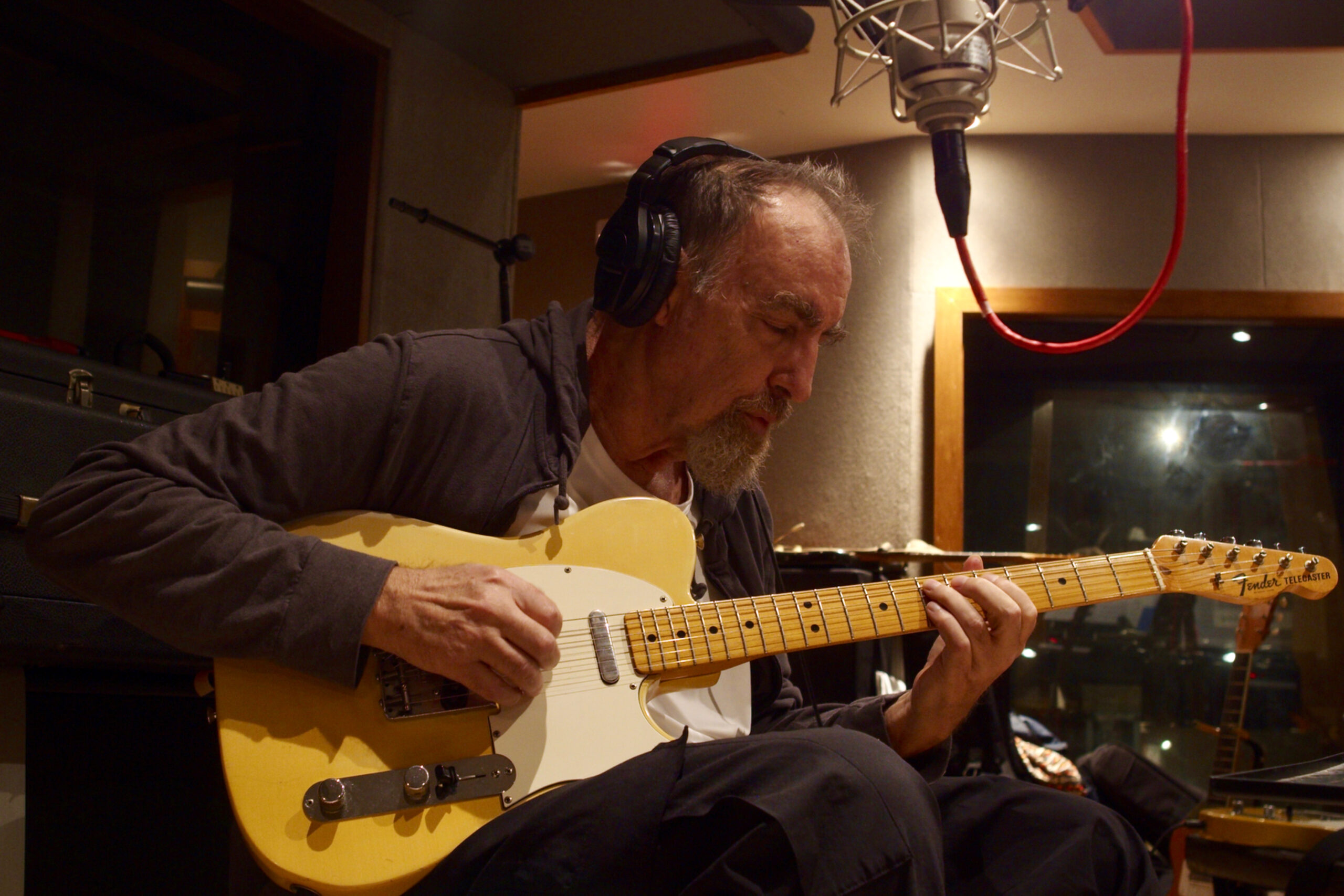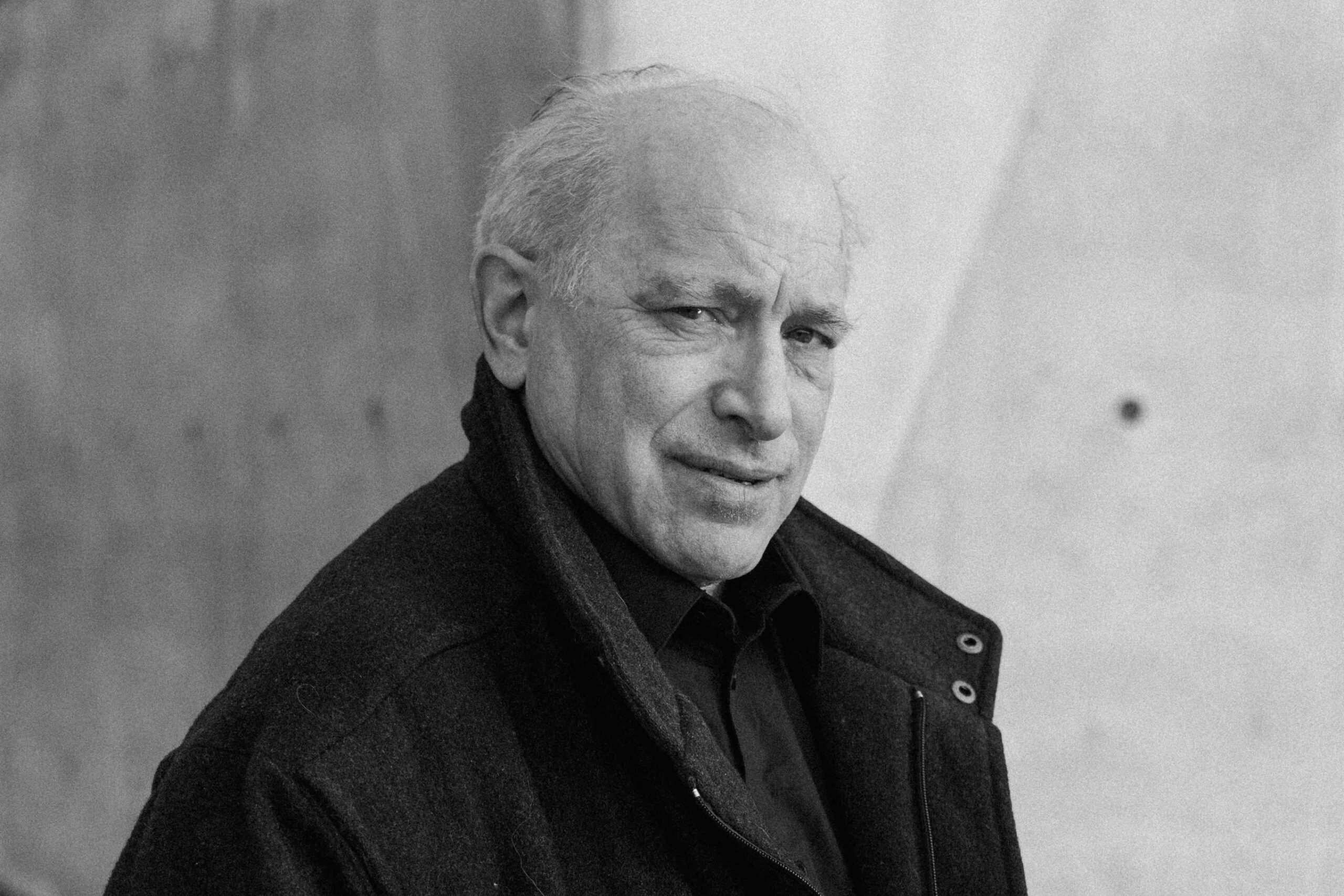Easier to See from the Outside: A Conversation with John Lurie
Symbolist painter Gustave Klimt once noted, “Art is a line around your thoughts.” Of course, as the march of time progresses, an artist’s thoughts change and adapt. No one should expect 1950s Miles Davis to sound precisely the same as his 1970s or 1980s counterparts. But what happens when an artist’s life circumstances change so materially that it becomes impossible to create art using the same tools they once did? In the case of John Lurie, it means reaching into multiple other avenues of artistic expression while retaining his own identifiable perspective. This is well displayed in his most recent project, his recently ended HBO show, Painting with John, and the soundtrack of the same name (Strange & Beautiful, 2024).
Artistic expression has always been in Lurie’s DNA. He started with a harmonica, teaching himself to play so well that he performed with some Blues greats when he was only fifteen. Lurie’s skills at learning instruments led him to do the same with the saxophone, which would remain his primary tool for much of his career. Just as critics were decrying the death of jazz, Lurie and his brother Evan started The Lounge Lizards, a group that was initially a lovingly tongue-in-cheek approach to the idiom. Lurie himself even initially called their music “fake jazz.” But, in reality, the downtown destructive musical force was never beholden to any genre norms. Punk, no-wave, and jazz were connected territories, not spaces divided by some great crevasse. Over time, The Lounge Lizard’s work evolved and changed. The edge and wit of the band’s initial incarnations remained but increasingly expressed itself through more complex and sophisticated compositions. By the threshold of the Twenty-First Century, the band was no more. Among other things, Lurie’s severe Lymes Disease meant his days with the horn were over. He would continue to make music – primarily on guitar, banjo, and vocals – as the fictional African-Jewish bluesman, Marvin Pontiac. But music was no longer his primary focus.
Still full of artistic ideas, Lurie turned his attention towards painting. In fairness, he began painting long before his Lymes Disease diagnosis. The Lounge Lizards’ albums No Pain for Cakes (Antilles/Island, 1987) and Queen of All Ears (Strange & Beautiful, 1998) even featured his work on their covers. Lurie’s paintings were fitting counterparts for such records because his work – beautiful but humorous and sometimes shocking – was equally clear in both mediums. His work is incredible; Andy Warhol and Jean-Michael Basquiat admired his creations. Several of his works are at the Museum of Modern Art in New York City. Lurie has also expressed himself artistically through film, having acted in films by Jim Jarmusch and Martin Scorsese, among others. In 1991, he wrote, directed, and starred in the hilarious Fishing with John, a mock fishing show that parodied reality television long before it was the norm.
Lurie’s most recent show, Painting With John, perfectly encapsulates all of Lurie’s artistic sides. It presents the master at work with his brushes and living on his small Caribbean island. The irreverent humor, restiveness, and continual search for something beautiful that have guided his work as far back as The Lounge Lizards is equally evident in the show and its music. The soundtrack consists of a combination of recent compositions, those by The Lounge Lizards (“The First and Royal Queen”), Marvin Pontiac (“Small Car”), and other projects past. Lurie’s longtime creative music collaborators – including Evan Lurie, Doug Wieselman, Steven Bernstein, Curtis Fowlkes, Tony Scherr, Calvin Weston, and Kenny Wolleson – appear here, too. Taken as a whole, the soundtrack to Painting with John provides an incredible overview of the contributions of a brilliant creator. What emerges throughout is that even as horns turn to strings, Lurie’s incomparable essence is felt regardless of his tools at hand. In the process, listeners are continually transported to unique worlds that are also distinctly Lurie.
We spoke with Lurie via email about the soundtrack and various other aspects of his art, in all its forms. The responses have been edited for clarity.
PostGenre: Painting with John presents both songs you wrote many years ago and new pieces. What is your method for composing and has it changed over time?
John Lurie: I used to write the more complicated melodies on saxophone – but I can’t play the saxophone anymore. Most of The Lounge Lizard songs came out of me practicing or playing on my own and coming upon a phrase that I then extended. I then went to the keyboard and wrote the other parts. The new stuff for the show was written on guitar or keyboard, and my approach is much different.
PG: Do you see your work in painting and music as connected?
JL: I am sure they are, but that might be easier to see from the outside.
PG: Due to your severe Lyme Disease, you had to give up making music for a long time. In an interview, you even indicated you couldn’t listen to music during that period because of how doing so would affect you. Was it difficult getting back into music-making?
JL: No, some of my limitations bothered me, but the overall experience was mostly a joy.
PG: The other musicians on Painting with John are people you have worked with many times over the years. How important is it to the creation of art as a collective body to have such longstanding relationships?
JL: With great musicians, there are specific things they can do that no one else can. I usually put a lot of sketches together and then weed through them with Steven Bernstein, and sometimes Doug Wieselman, then we decide what instrument is playing what and who would be best to play it. And we know these guys and what they can do. They also meld together. With Calvin, Tony, and Kenny, I know I can come up with some simple thing, and then they can manufacture a groove around it which is almost always infectious in some way.
PG: One of the musicians on Painting with John is Curtis Fowlkes, who passed away last year. Do you have a favorite memory of your time with him?
JL: Curtis wasn’t one of those wild story guys. He was quiet, almost gentle. He often would look up and say something searingly funny in a soft voice.
A nice thing happened the last time I saw Curt. He wasn’t looking well at all, and as he was leaving the recording, I took him aside and said, “Curt, I never told you I love you. But I do. Very much. I love you.” So it was lucky in a way, I mean, usually the last thing you said to someone was – “Don’t leave your fucking socks there. What’s wrong with you?” – or something awful, and it bothers you forever. So, with Curtis, I got lucky. Loved him. Miss him.
PG: Do you feel that the experience of going back and recalling your life in writing your memoir, The History of Bones (Random House, 2021) gave you a different perspective on your life’s work?
JL: Random House had asked that I write about New York City in the 1980s. I had already worked on a memoir that had covered a much longer period. History of Bones was really based on what happened and who I was during that time.
PG: You taught yourself how to play the sax and also composition. How important was it to your artistic vision that your approach to the art form be self-taught, and do you feel it gave you a different perspective than you would have had with more formal instruction?
JL: Some musicians go to school and never break away from it. What they learn imprisons them, and they don’t find their true voice. On the other hand, there are huge holes in my musical abilities. I can usually figure out what I need to, to do what I want to do, but it crossed my mind that I should maybe go back and study. Because I was thinking about writing a string quartet, and it would just go quicker if I had the proper tools at my disposal.
PG: You moved around a lot when you were young – originally from Minneapolis, moved to New Orleans, moved to [this author’s home city] of Worcester, Massachusetts, and moved to London. Do you feel that moving around so much shaped your expansive view of music and combining ideas from different genres or styles?
JL: Not so much that. It is that once I got into music, I searched and searched and searched. First discovering music from Bali. Then Africa. Then India. The tapes Louis Sarno recorded of the Pygmys was hugely important. When I went to Morocco [to act in The] Last Temptation [of Christ], I met and played with these Gnawa musicians who entered my musical soul and never left.
PG: The Lounge Lizards ended almost twenty-five years ago. What do you think is the group’s legacy?
JL: I don’t know, that isn’t for me to answer. Like when they ask a quarterback if he is one of the 5 best. What the fuck is he supposed to say? If he says – “I am great,” he looks egotistical. If he says – “no, I am not one of the 5 best” – he looks unconfident. So it is up to you to say how amazing the band was. I will sit here quietly while you do that.
PG: You were asked in an interview which Lounge Lizards record you were most proud of. Your response was “the one we never got to make.” What can you tell me about the one that never came to be?
JL: The last couple of years the band was together was maybe the best material and best performances when we played live, but we never could get back in the studio to record it. And I regret that.
PG: Do you think your work as Marvin Pontiac was at all shaped by your experiences playing harmonica with John Lee Hooker and Mississippi Fred McDowell when you were fifteen?
JL: Never thought of that. Good question, but I don’t have a good answer. I don’t think it did, actually.
PG: You have been referred to as “the Patron Saint of Outsider Art” and your record label is named Strange and Beautiful Music. Do you feel that being an outsider is an essential trait for someone to make substantive art?
JL: I have? That is weird because I once tried to work with the guy who runs the Outsider Art Fair in New York, and he didn’t return my calls. I guess I am really outside.
PG: You have spoken before about trying to avoid fame and also about how when you are painting, you disappear into the world you are creating. Do you create art, whether music or painting, primarily for yourself or do you have viewers and listeners in mind when you create?
JL: With both, I try to create a world, a place to enter. I don’t think about viewers or listeners. But now the new record is coming out in a couple of weeks, and I wish there was a way to witness people experiencing it.
PG: You have indicated previously that you have tons of tapes of your music sitting in storage. Is there any in particular that you would like to see released to the public?
JL: Tons is the correct description. It would be a daunting task to go through these boxes and boxes of tapes. I do hope it happens at some point.
PG: You have indicated that because of your cancer, Painting with John may be the last thing you work on. You have dedicated so much of your life to art, whether music or painting. Where do you see art’s role in the overall meaning of life?
JL: I have always tried to approach a project like it is, not exactly the last, but that it is of supreme importance. To make something good, there are a lot of struggles along the way, and one tends to not put in the effort required to make the project right. Though I am afraid that the bio that came out with this record looks like I am going to die in the next five minutes, and that is not the case.
Painting with John will be available on Strange & Beautiful Music on March 15, 2024. It can be purchased from Royal Potato Family’s website. Lurie’s remarkable paintings are available for purchase on his own website.
Photo credit: Eric Mockus




One thought on “Easier to See from the Outside: A Conversation with John Lurie”